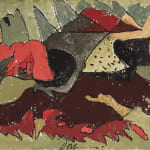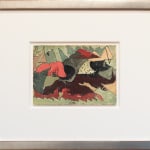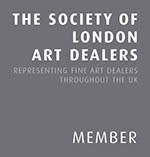
 Framed image
Framed image

Arthur Dove American, 1880-1946
5 x 7 in
Further images
Provenance
Aline Dove (the artist's daughter-in-law; acquired as a gift from the artist)Estate of the artist
Terry Dintenfass, Inc., New York
Acquired from the above in 2003 by a private collector
Acquired from the above by JC Gallery
Exhibitions
An American Place, New York, Arthur Dove, March 1943;JC Gallery, London, James Ward Presents: Seven Americans, 2024;
JC Gallery, London, Arthur Dove: extraction, not abstraction, 2024
This charming work on paper titled ‘Landscape’ (1941), created towards the end of Dove's life, is typical of his nature inspired extraction works. These works focused on Dove's emotive and passionate responses to nature. The piece is intimate in scale and draws the viewer into Dove's world. A world in which colours and form are felt intuitively.
In a diary entry for August 5, 1942, Dove sets his intentions to depicting the “point where abstraction and reality meet”. The present work is a fascinating prelude to this proclamation. Here you can see the contrasting colours, blood reds and luscious greens dancing around the composition and bold nonrepresentational imagery. Subtle yellow ochres and sand tones form around the image, adding harmony and relaxing the eye. Areas of black punctuate and draw us in towards the centre of the image. Beneath these fields of colour on textured paper Dove's relaxed yet confident lines resonate. There is a delight in the puzzle of his process, in trying to understand the craftsmanship behind the extraction.
The title, ‘Landscape‘, reveals to us that this work is intending to evoke the feeling and impact he felt when observing a scene within the natural world in all its splendour.
This gravitation towards abstraction was a bold innovation and would later have an indirect influence on the first generation of Abstract Expressionists, such as Jackson Pollock and Mark Rothko.



